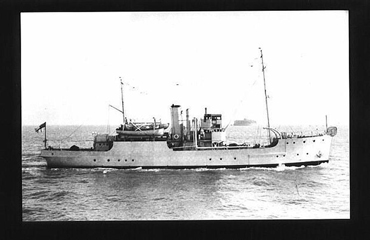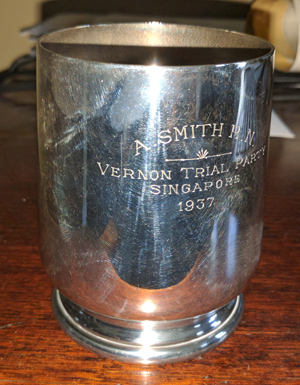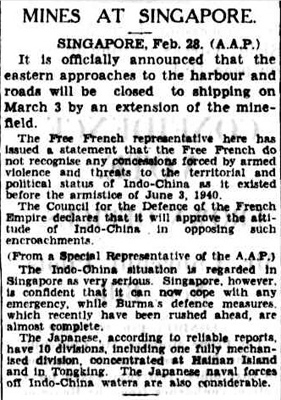
OF THE ROYAL NAVY AT SINGAPORE
This is the story of the indicator loop and controlled mining station built during WW2 as part of the Royal Navy's anti-submarine harbour defences of Singapore.
 |
HMS Redstart steaming out of Portsmouth harbour. Redstart was a indicator loop minelayer that operated in Singapore harbour in WWII. (photoship.co.uk) |
 |
If you have any feedback please email me: Dr Richard Walding Research Fellow - School of Science Griffith University Brisbane, Australia Email: waldingr49@yahoo.com.au |
LINKS TO MY RELATED PAGES:
Indicator loops were laid in Singapore in 1937. This was part of the upgrade to loops by the British Admiralty throughout the 1930s. After some success with indicator loops at the very end of WWI, the Admiralty had the Royal Navy lay experimental loops at Portsmouth in 1929 as well as trials at the Firth of Forth (Edinburgh), Malta and Bantry Bay in Southern Ireland. Once they had proved their effectiveness the Admiralty decided on a program of loop-laying during this period of German militarisation. In 1937 loops were laid at Singapore under the supervision of a Controlled Mining and Loop Laying party from HMS Vernon. Vernon had undergone many changes in the post-WWI years but was able to retain its mining indicator loops function. Loops were also laid by 1937 off the Firth of Forth (May Island), and by 1938 they were planned for Portsmouth, Plymouth, Malta and Hong Kong [see PRO ADM 186/519. Annual Report HM Antisubmarine Establishment -1935 to 1938].
My thanks to Rex Deighton Smith <jaguar2@tpg.com.au> for information about his grandfather Lt Arthur Smith RN who served as part of the Controlled Mining (CM) party out of HMS Vernon shore establishment, England in WWII.
LT ARTHUR SMITH
Arthur Smith was born in Limpsfield, Surrey, England and joined the Royal Navy in 1909 as a 16 year old ship's boy. He was stationed at various times in South Africa, Australia, Malta, Palestine, Singapore and Hong Kong, during a career that spanned 34 years, before being invalided out of the service in early 1943. He fought at the Battle of Jutland as a Petty Officer on the cruiser HMS Comus, before being promoted to warrant rank as Gunner (Torpedos) in 1917, aged only 24.
Seconded to the Royal Australian Navy in November 1919 as part of the crew of the "gift flotilla", he returned to the UK in late 1921 and served on several more destroyers during the inter-war period, as well as spending two years on the staff of HMS Vernon (1931-33), during which time he was trained in controlled mining. After service aboard HMS Blanche in Haifa (Palestine) during the Arab Revolt of 1936, he formed part of HMS Vernon's Special Trials Party at Singapore in 1937, where initial work toward the installation of controlled minefields (completed in early 1940) was undertaken.
 |
Engraved cup presented to Arthur Smith. (Rex Deighton Smith) |
 |
| The Controlled Mining (CM) party at HMS Tamar (Hong Kong) - late 1939 or early 1940. Arthur is the Lieutenant, 2nd row, 3rd from left. (Rex Deighton Smith) |
Promoted to Lieutenant in 1938, he spent nearly three years as second-in-command of the Controlled Mining Party at Hong Kong, installing the controlled minefields in Hong Kong Harbour, before returning to HMS Vernon in October 1940 and undertaking the mining of Burry Port (Wales) in 1941. His final appointment was to the minelayer HMS Helvig, where he served from 1941 - late 1942, both escorting convoys along the east cost of the UK and strengthening the minefields that formed the northern part of the "Eastern Barrier". Arthur was removed from Helvig on medical grounds in late 1942 and placed on the retired list in March 1943.
 |
The Sydney Morning Herald, |
Having been hospitalised several times over the next few years, Arthur Smith emigrated to Australia with his family in late 1946 and died at the Heidelberg Repatriation Hospital in Melbourne in April 1947.